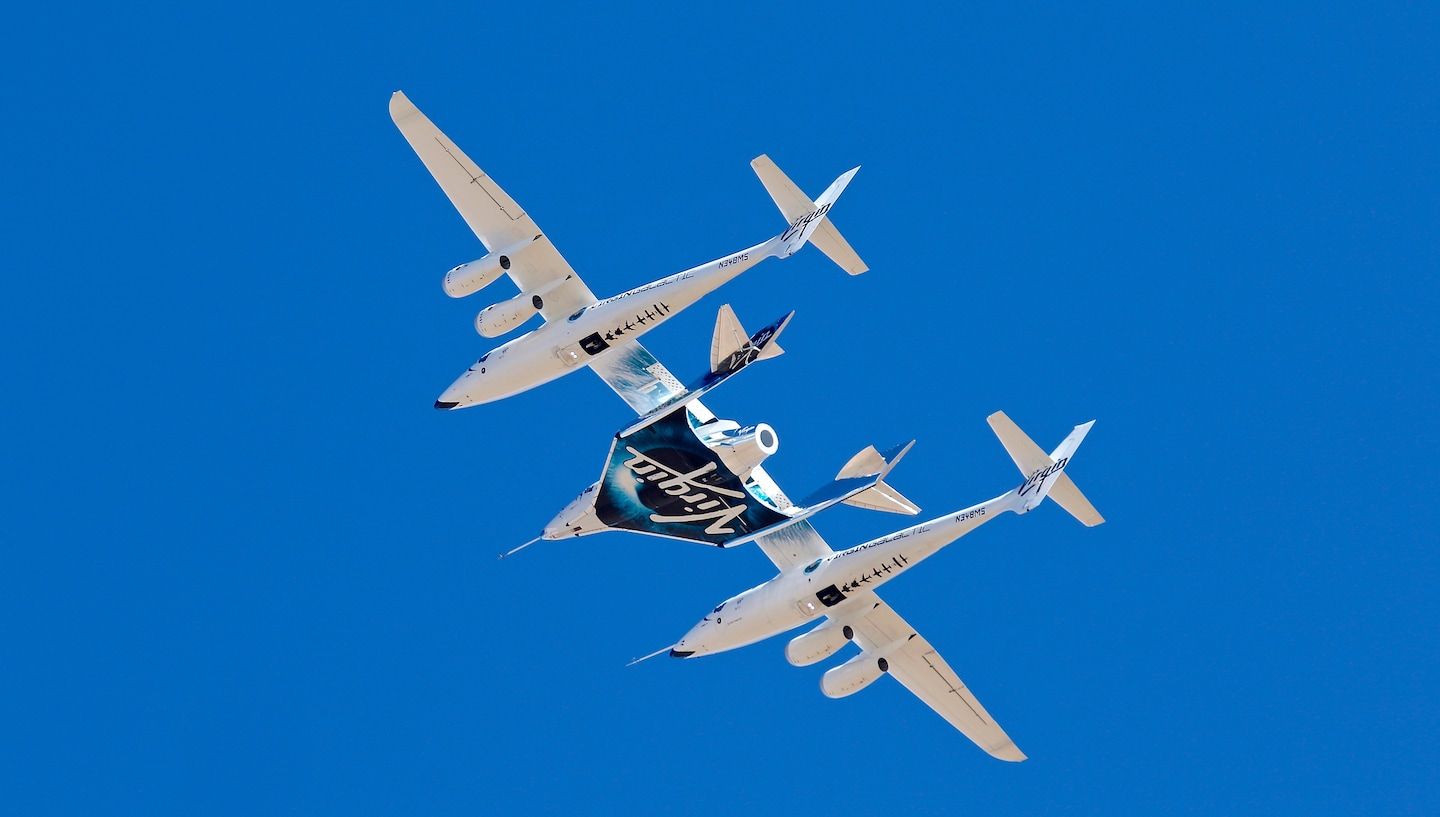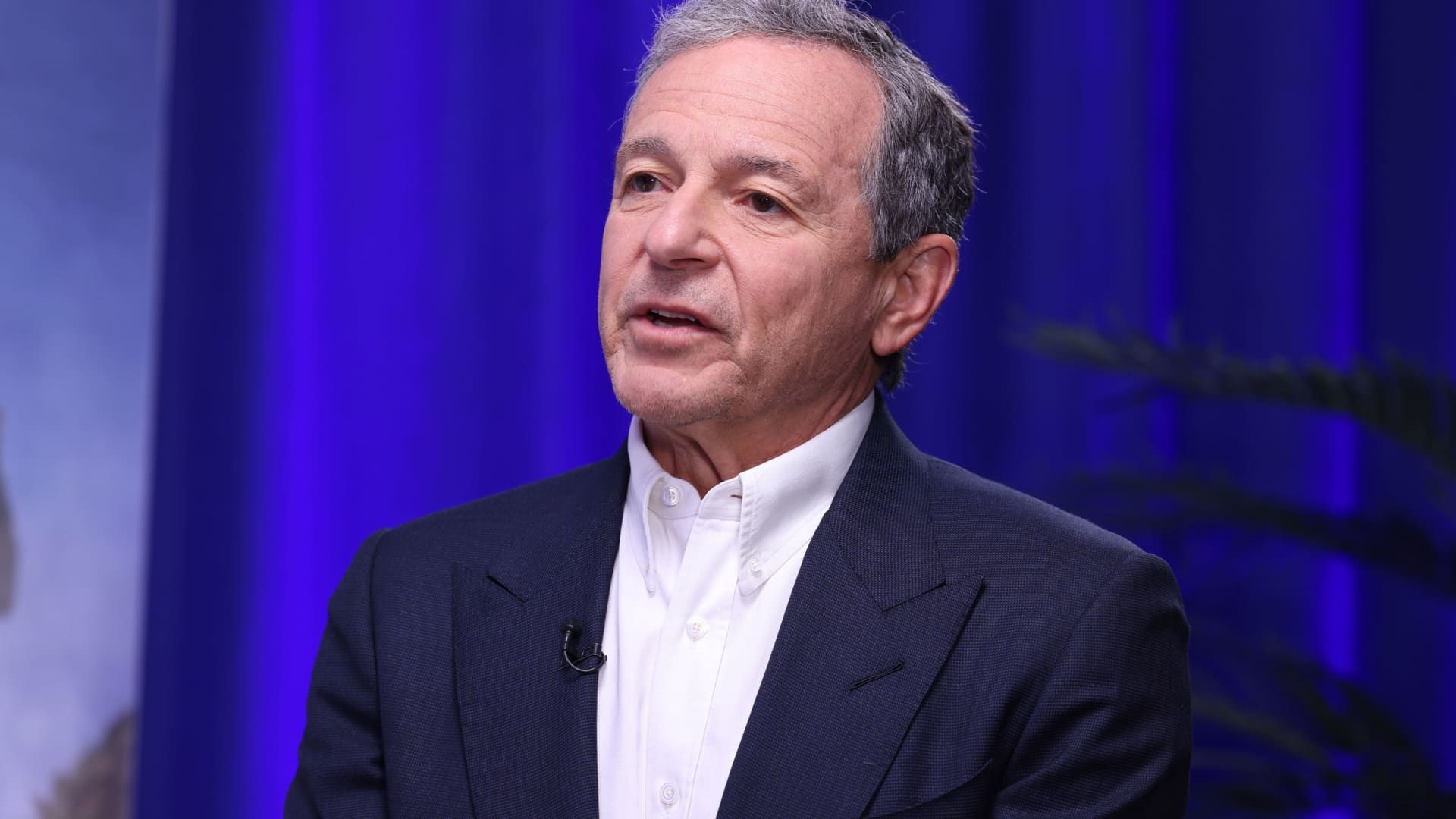Virgin Galactic completes first flight to space with paying customers
Listen 5 min Comment on this story Comment Gift Article Share
Richard Branson’s Virgin Galactic finally flew its first paying customers to the edge of space Thursday, completing a long-awaited milestone that comes nearly 20 years after the British billionaire started to pursue his dream of creating a space tourism venture. Tech is not your friend. We are. Sign up for The Tech Friend newsletter. ArrowRight The flight from Spaceport America in New Mexico was not full of wealthy thrill seekers but rather was commissioned by the Italian government for a pair of Italian air force officers and an Italian engineer who used the mission as a training exercise and to conduct science experiments.
Instead of launching vertically in a traditional rocket and capsule, Virgin Galactic flies its passengers in a piloted spacecraft called Unity. The spacecraft is tethered to the belly of a twin-fuselage airplane, which flies to an altitude of about 45,000 feet.
Advertisement
Once aloft, the airplane releases Unity, whose pilots ignite its engine and guide it straight upward until it passes an altitude of about 50 miles before falling back to Earth. The flights do not reach orbit. Their up-and-down trajectory traverses space for just a few minutes.
On Thursday, the spacecraft landed softly on a runway at about 11:44 a.m. Eastern time after reaching a peak altitude of about 53 miles, the company said on a live broadcast. With the completion of its first commercial mission, the company said it hopes to begin flying a backlog of customers who have paid as much as $450,000 per ticket. In some cases, they have waited years to fly.
The Virgin Galactic flight comes days after a commercial submersible operated by a private company, OceanGate, imploded, killing all five people on board and raising questions about how such extreme adventures should be regulated. In the world of commercial spaceflight, that debate has been ongoing for years and is starting to intensify as a prohibition on strict regulations imposed by Congress is set to expire.
Advertisement
The Federal Aviation Administration governs with a light touch, issuing launch and reentry licenses to ensure space companies protect people and property on the ground. But the regulations do not protect flight participants, who only have to sign a waiver acknowledging they understand the risks. In that way, going to space is governed by the same “informed consent” standard used by other adventure industries such as skydiving.
Because the industry is considered to be in its infancy and still developing new spacecraft and new technologies, Congress imposed a “learning period” in 2004 that prohibited the FAA from issuing regulations for passengers. That learning period was extended but is now set to expire by October. Commercial spaceflight companies have argued that they have not made as much progress as they had anticipated and so the learning period should be extended once again.
In April, a report by Rand Corporation recommended allowing the learning period to expire while ensuring that the FAA had the resources needed “for the appropriate regulations.” In a statement to The Washington Post, the agency said it “is taking preparatory actions now in the event the moratorium/learning period expires and will continue on if it gets extended.”
Blue Origin, the space venture founded by Jeff Bezos, has been working with the FAA after its suborbital rocket, called New Shepard, suffered an engine failure during a flight without any people on board last year. The company said it understands what caused the problems and is working to resume flying soon. Bezos was on its first human spaceflight mission in 2021. Since then, it has flown some paying customers but has been grounded since the accident last September. (Bezos owns The Washington Post.)
Aboard the flight Thursday were Col. Walter Villadei and Lt. Col. Angelo Landolfi of the Italian air force and Pantaleone Carlucci of the Italian National Research Council. They are bringing a number of scientific payloads to measure radiation in the mesosphere, the portion of the atmosphere between 30 and 50 miles high, and to test how spaceflight affects the human body.
Advertisement
They were accompanied by Colin Bennett, a Virgin Galactic astronaut instructor, who flew on the first human spaceflight mission by the company with Branson in 2021. The pilots in Unity are Mike Masucci, who has now flown Unity to space four times, and Nicola Pecile, an Italian, who was on his first flight aboard Unity.
Virgin Galactic, which has struggled with commercial operations, hopes the mission will mark a turning point. In its last earnings report, it said it lost $159 million in the first quarter this year, compared with a $93 million loss the year before.
The company did not fly for nearly two years while it worked to refurbish its systems, including the carrier plane. It is also focusing on a next-generation spaceplane called the Delta Class, which the company said will be able to fly more frequently than Unity. But it is not expected to be ready until 2026.
Branson first bought the rights to the technology in 2004, after SpaceShipOne became the first privately funded vehicle to reach space. In 2014, Virgin Galactic suffered a fatal accident when its space plane came apart during a test flight, killing one of the pilots and severely injuring the other.
Gift this article Gift Article
Source: The Washington Post


